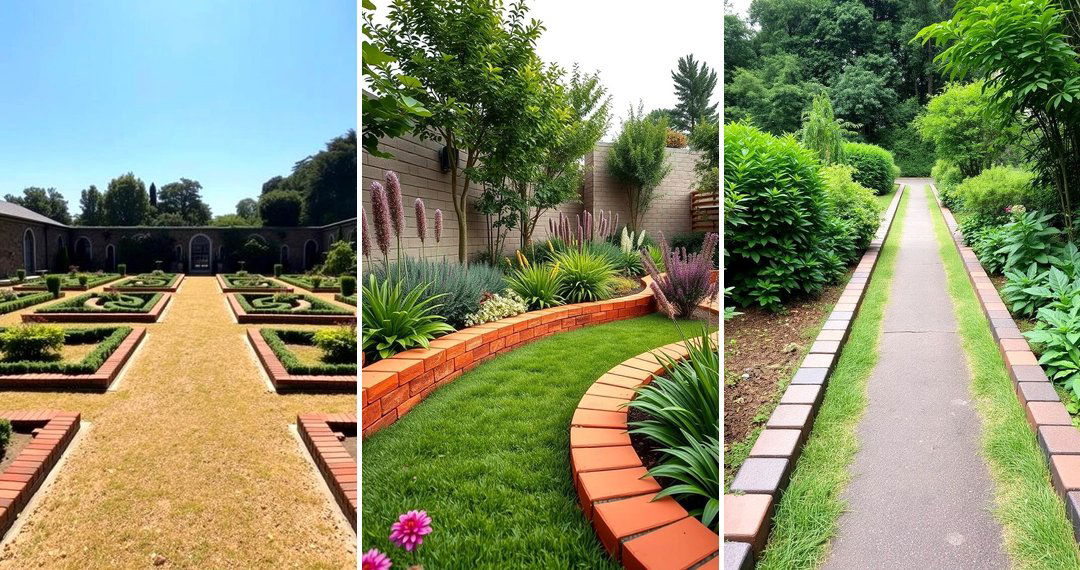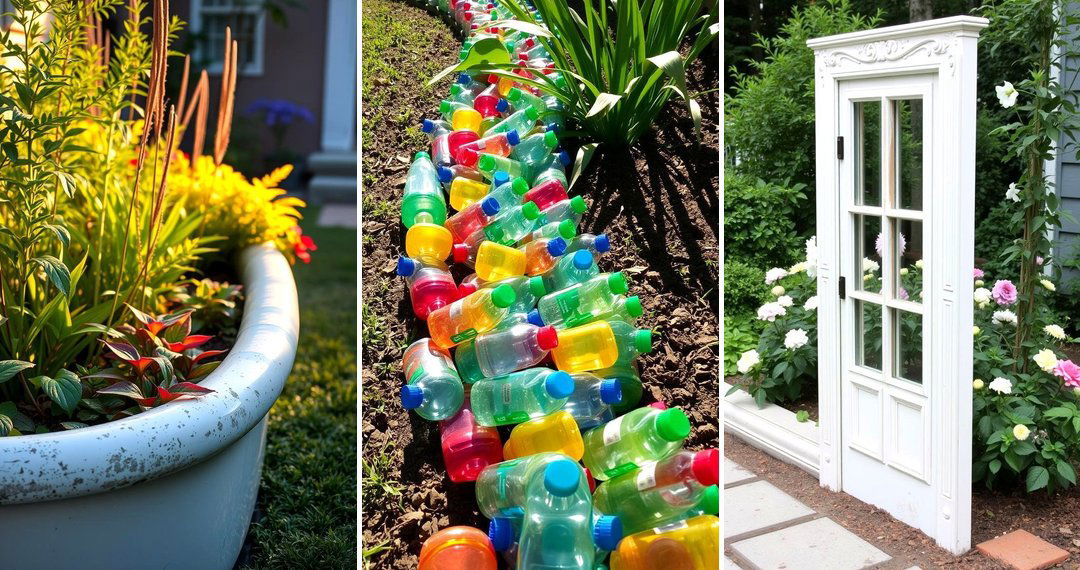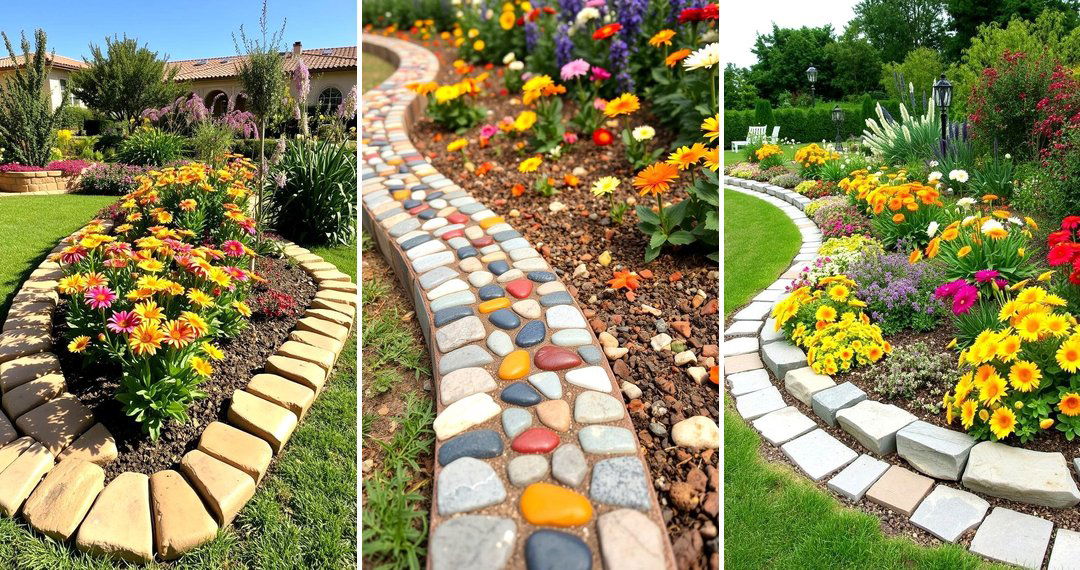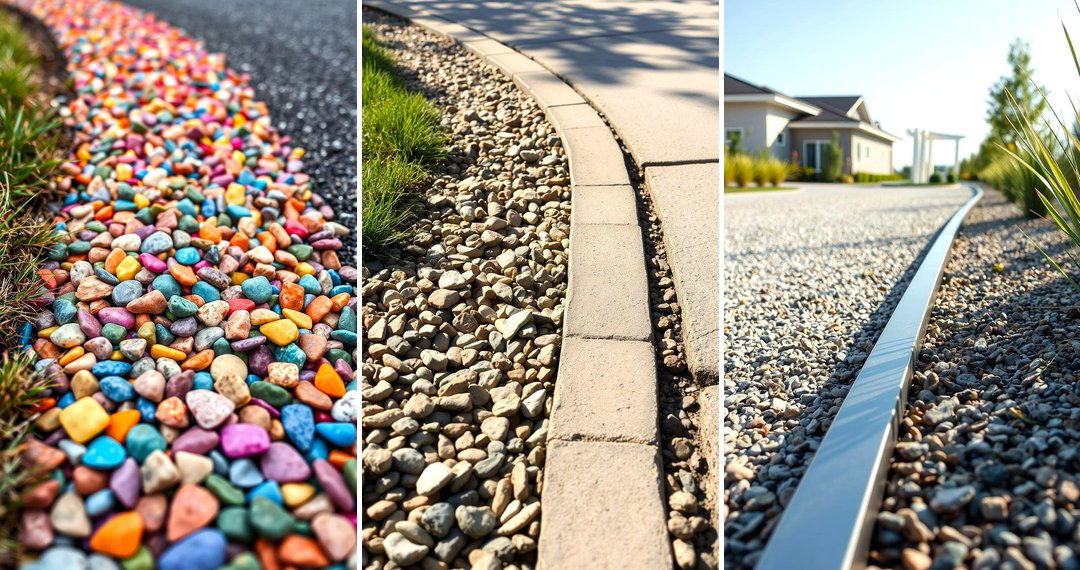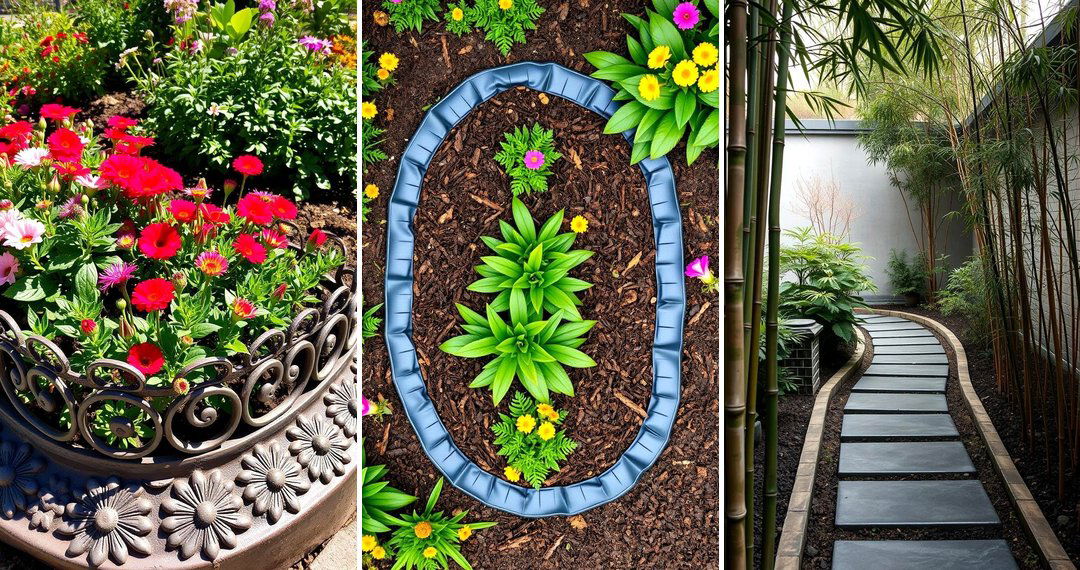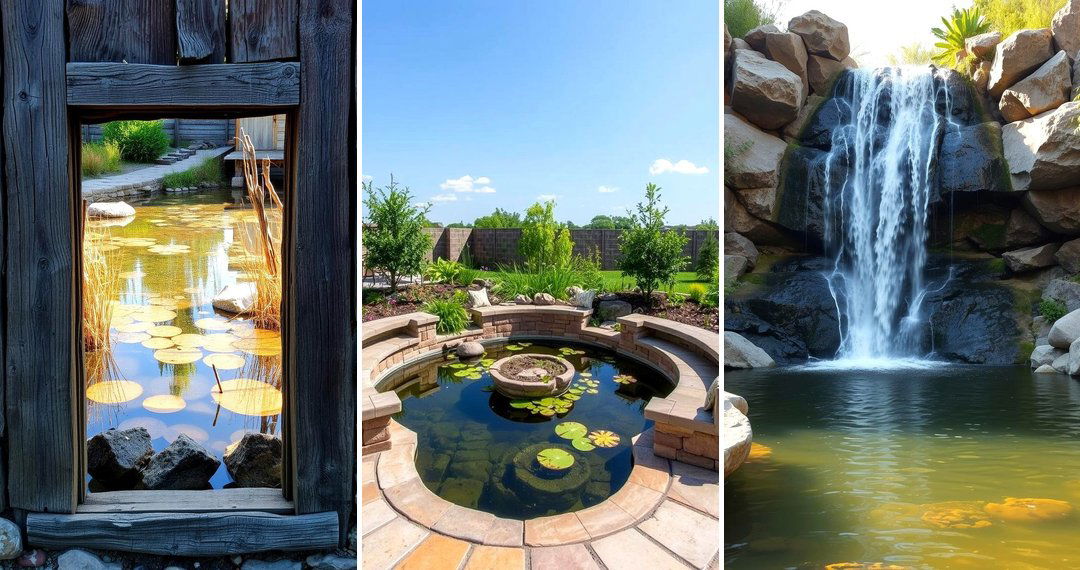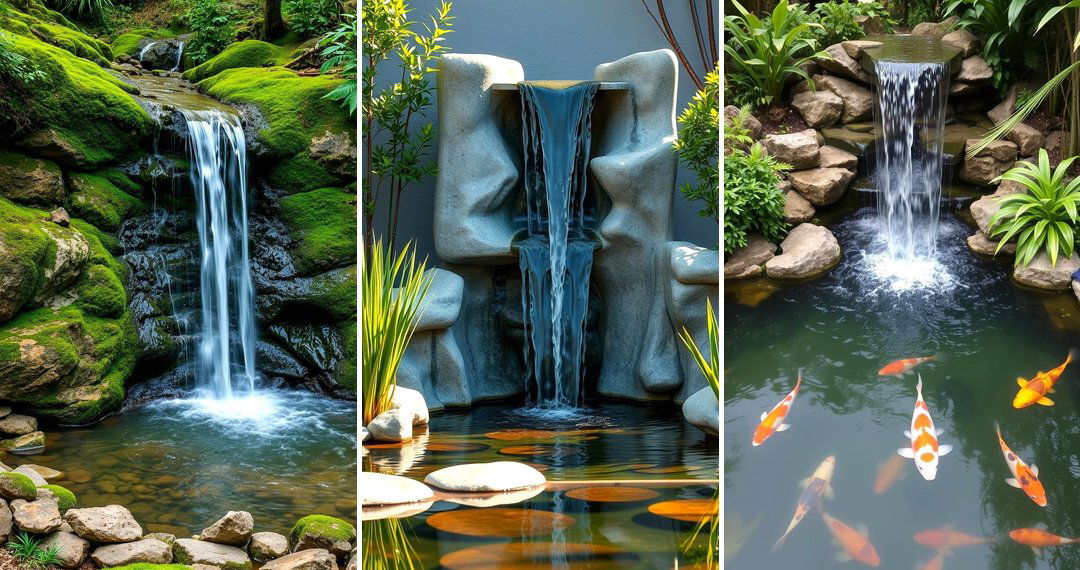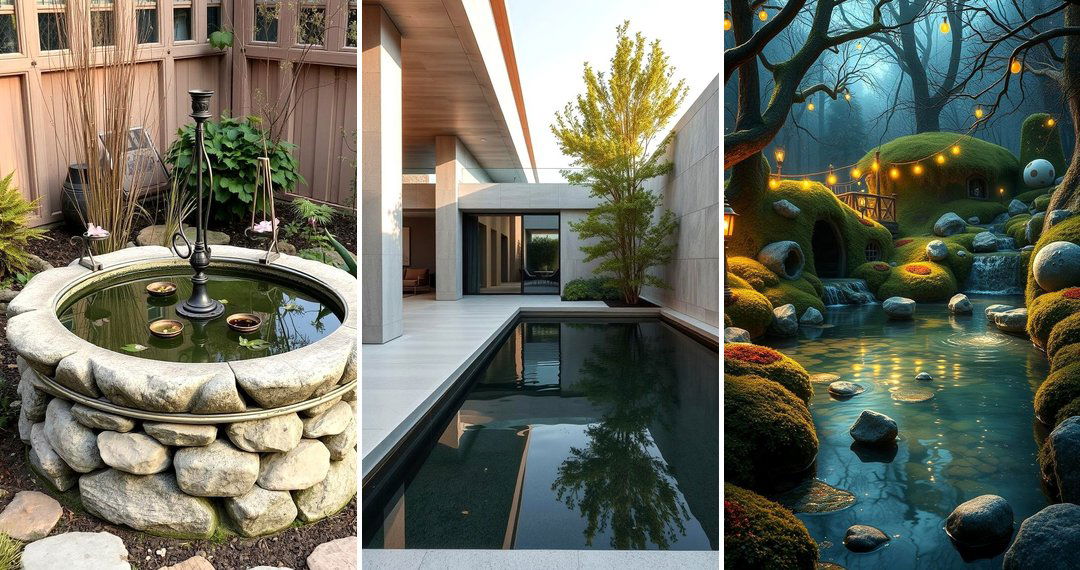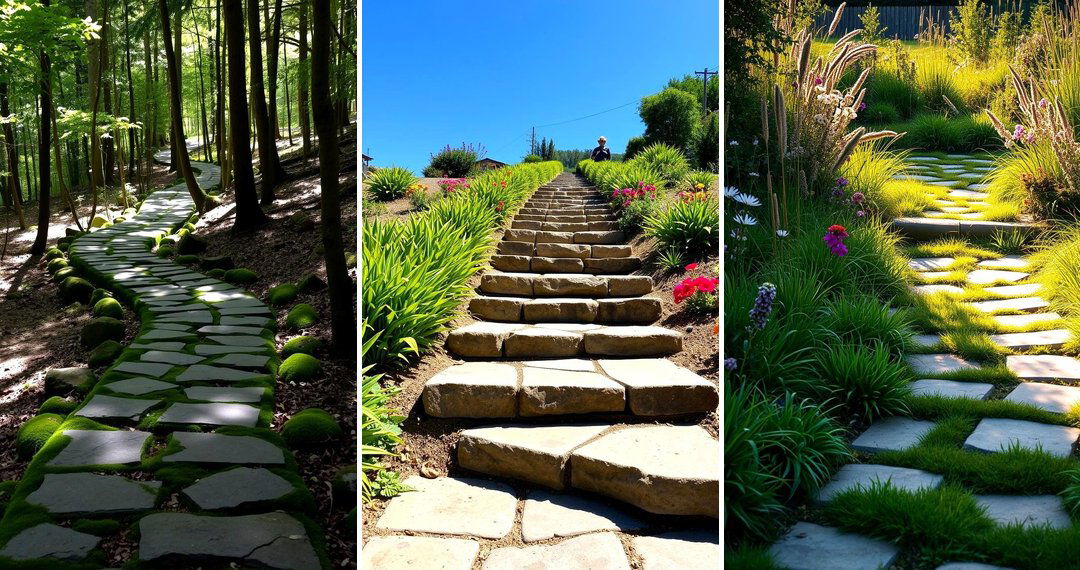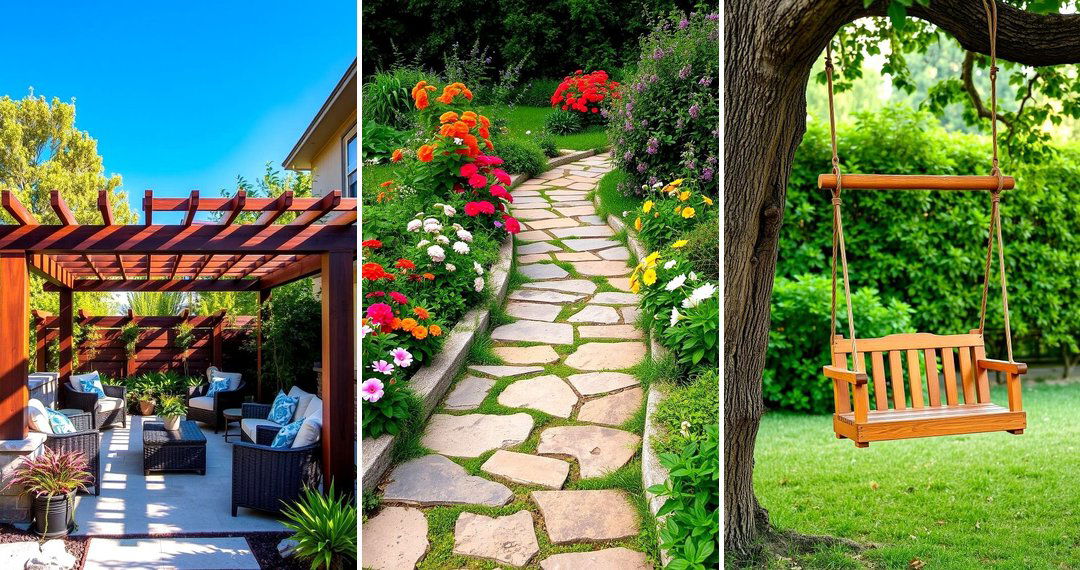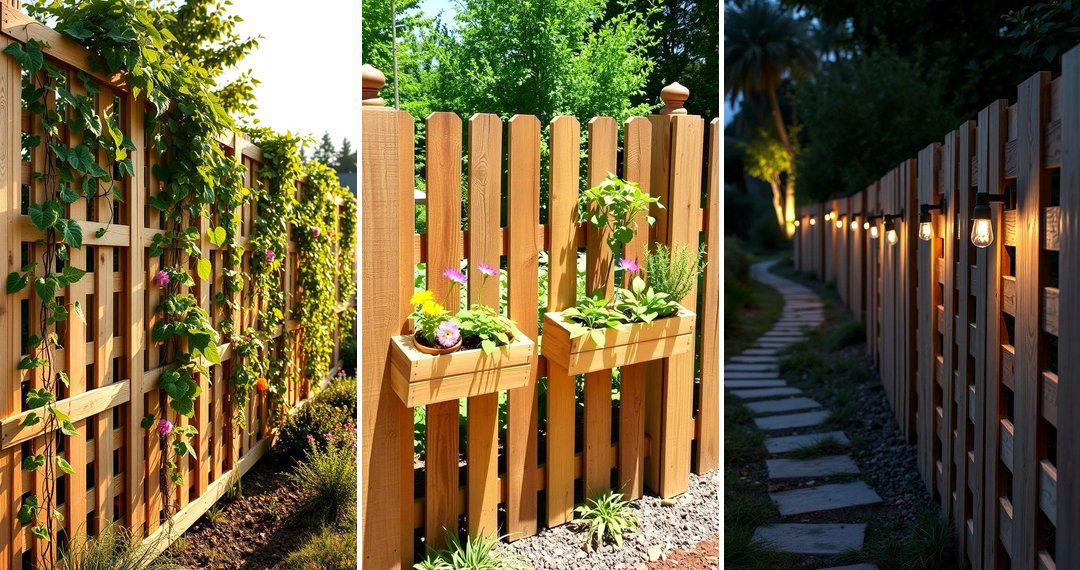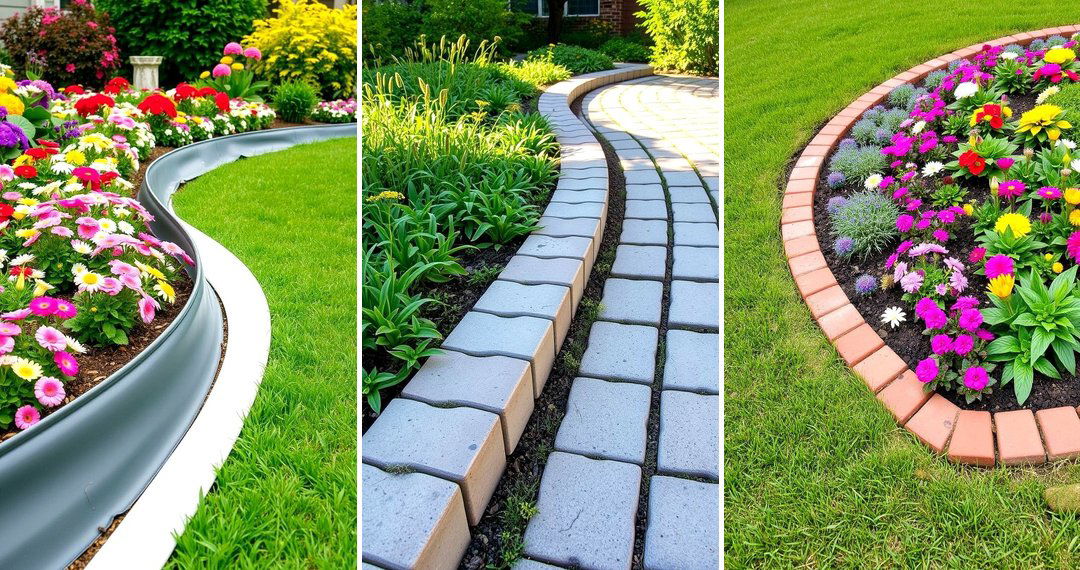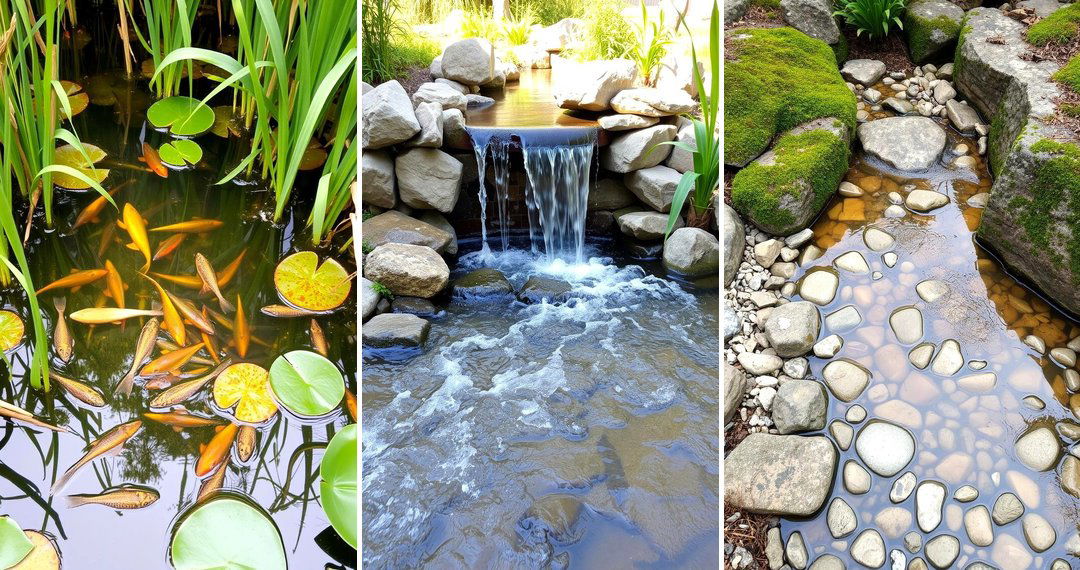Welcome to our comprehensive guide on transforming your backyard pond with stunning and practical edging solutions. Whether you're a seasoned pond enthusiast or just embarking on this aquatic adventure, the right edging can dramatically enhance the beauty, functionality, and longevity of your water feature. We've gathered a diverse collection of pond edging ideas to inspire you, ranging from natural and rustic to sleek and contemporary. Discover how these creative approaches can not only define your pond's boundaries but also protect its delicate ecosystem and add a touch of personal flair to your outdoor space. Get ready to dive into a world of possibilities and find the perfect edging to complement your unique pond and landscape.
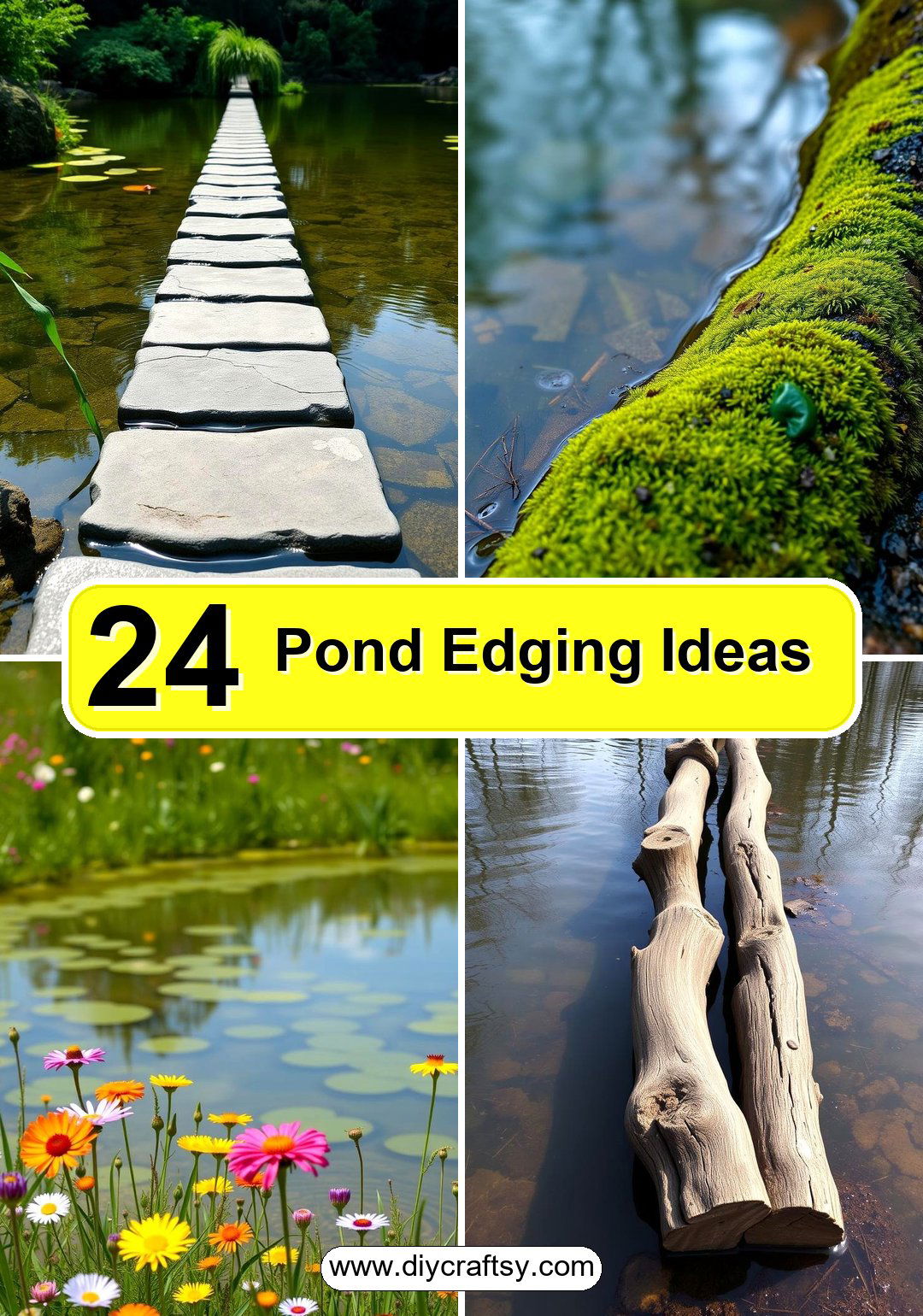
1. Natural Stone Beauty
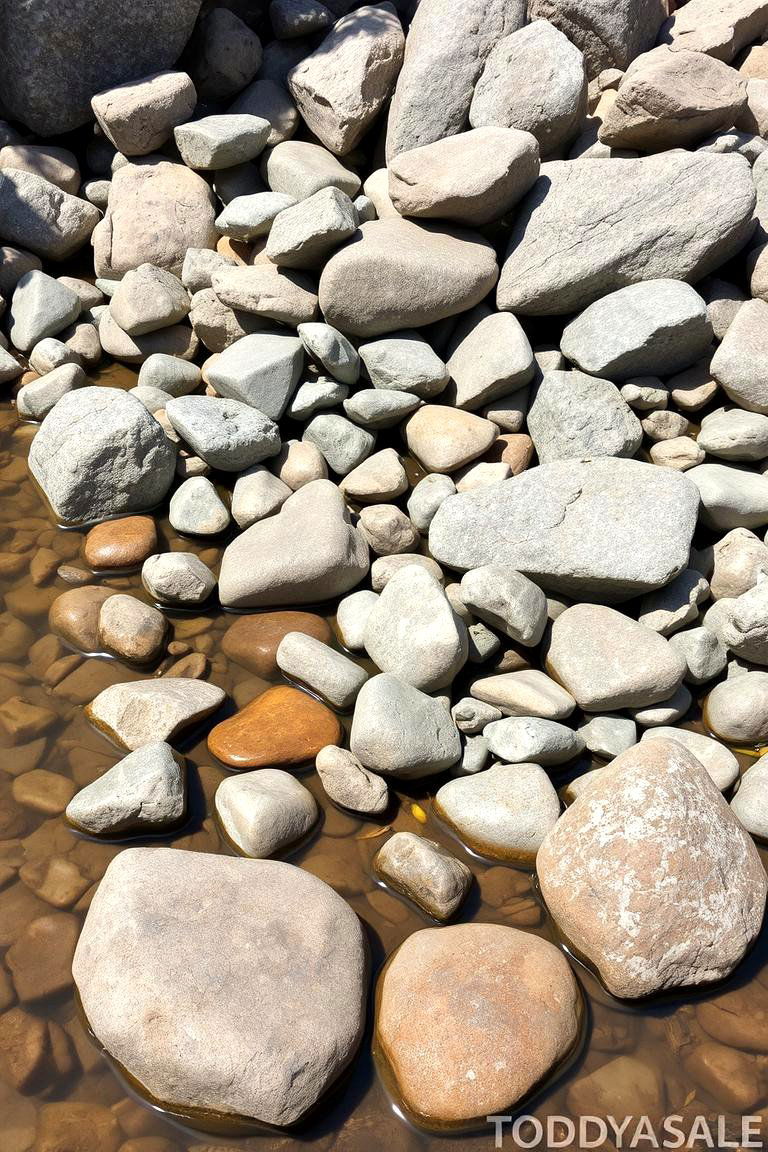
The timeless appeal of natural stone brings an organic and enduring quality to any pond's edge. These stones, ranging from smooth river rocks to rugged boulders, offer a visually appealing and highly durable border. With their varied shapes, sizes, and colors, natural stones can be arranged to create a truly unique and personalized look. Bringing a touch of nature's artistry, they seamlessly blend with the surrounding landscape, enhancing the pond's aesthetic. Moreover, natural stone is incredibly resilient to weathering and erosion, ensuring long-lasting protection for your pond liner and preventing soil runoff. Consider the ease of installation and the minimal maintenance required, making it a practical and beautiful choice for pond enthusiasts.
2. Gravel Pathway Elegance

Another excellent choice for pond edging is the creation of a gravel pathway. This approach not only defines the perimeter of your pond but also provides a functional and aesthetically pleasing walkway around it. With a variety of gravel types and colors available, you can easily customize the look to match your garden's style. Bringing a sense of order and sophistication, a gravel pathway helps to contain mulch and soil, preventing them from washing into the pond. Furthermore, the crunch of gravel underfoot adds a sensory element to your garden experience. Take into account the good drainage properties of gravel, which can help to prevent waterlogging around the pond's edge, contributing to a healthier environment for both plants and pond life.
3. Wooden Log Simplicity
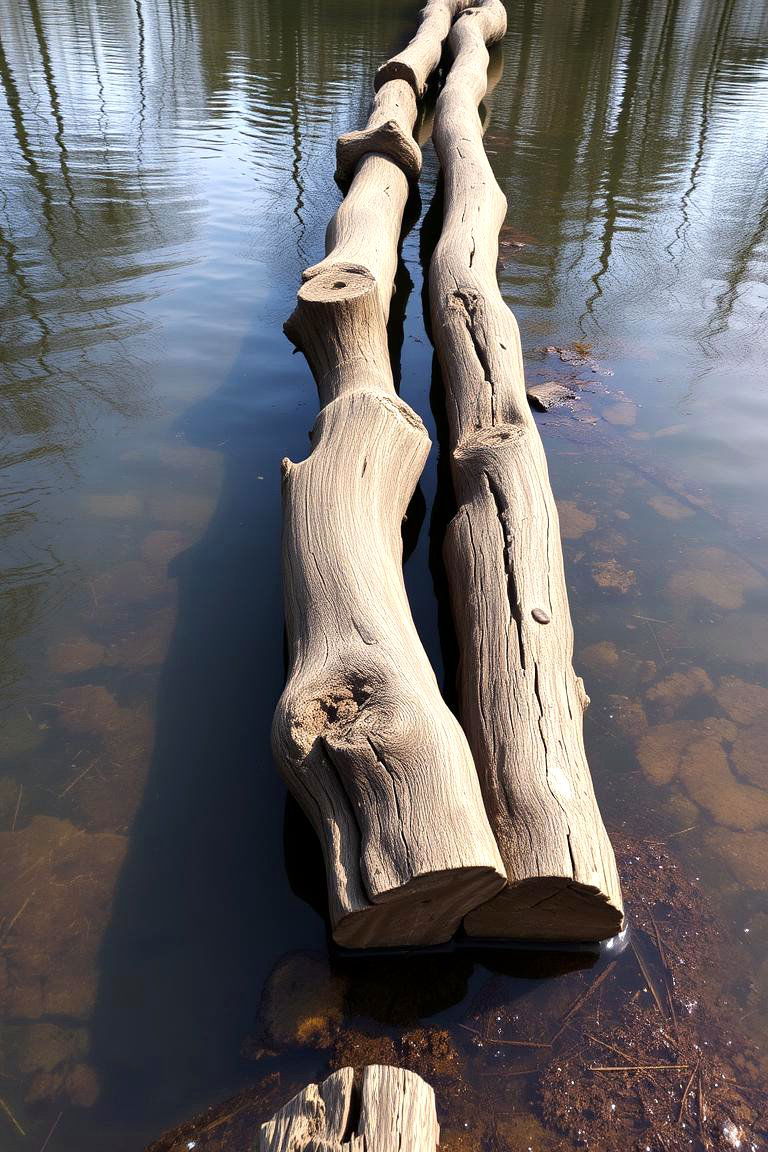
For a rustic and natural aesthetic, consider using wooden logs as pond edging. These can be placed end-to-end to create a charming and informal border. With their inherent warmth and texture, wooden logs blend seamlessly with natural surroundings, adding a touch of woodland charm to your garden. Bringing a sense of organic beauty, they can also provide a habitat for small insects and amphibians, further enhancing the pond's ecosystem. Remember to choose rot-resistant wood like cedar or redwood for longevity. Additionally, you can stain or seal the logs to further protect them from the elements and extend their lifespan, ensuring your pond enjoys this natural border for years to come.
4. Brick Border Classic

The classic appeal of a brick border offers a neat and defined edge for your pond. Bricks come in various colors and styles, allowing you to create a traditional or more contemporary look. With their uniform shape, they provide a clean and structured boundary, enhancing the overall tidiness of your garden. Adding a touch of timeless elegance, a brick border is also durable and can withstand the elements for many years. For a softer look, consider planting low-growing greenery along the brick edge. Furthermore, the installation process is relatively straightforward, making it an accessible option for many DIY enthusiasts looking to add a touch of sophistication to their pond.
5. Concrete Block Versatility
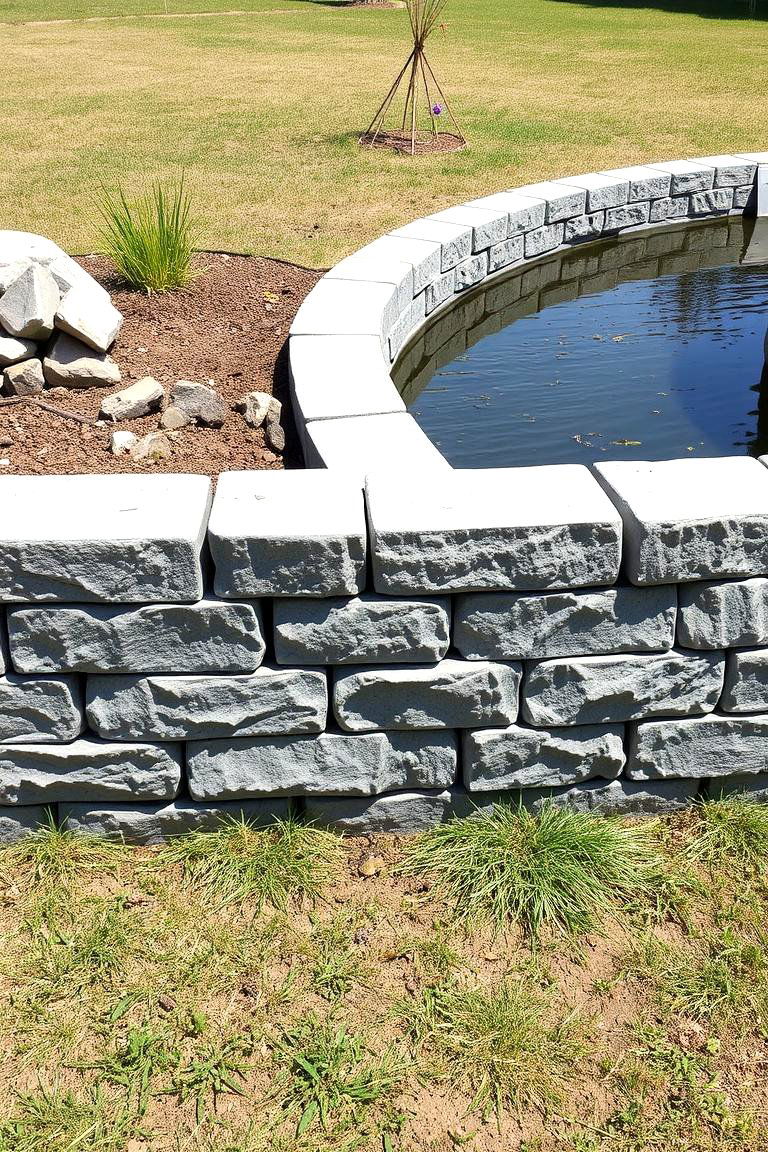
Consider the versatility of concrete blocks as a practical and customizable pond edging solution. These blocks are available in numerous shapes, sizes, and textures, offering endless design possibilities. With their robust nature, they provide a sturdy and long-lasting border for your pond. Bringing a sense of modern functionality, concrete blocks can be arranged in various patterns to create unique edging designs. Additionally, they can be painted or stained to match your desired color scheme, allowing for seamless integration with your landscape. Take into account their affordability and ease of stacking, making them a budget-friendly and user-friendly option for defining your pond's edge.
6. Planting Bed Integration
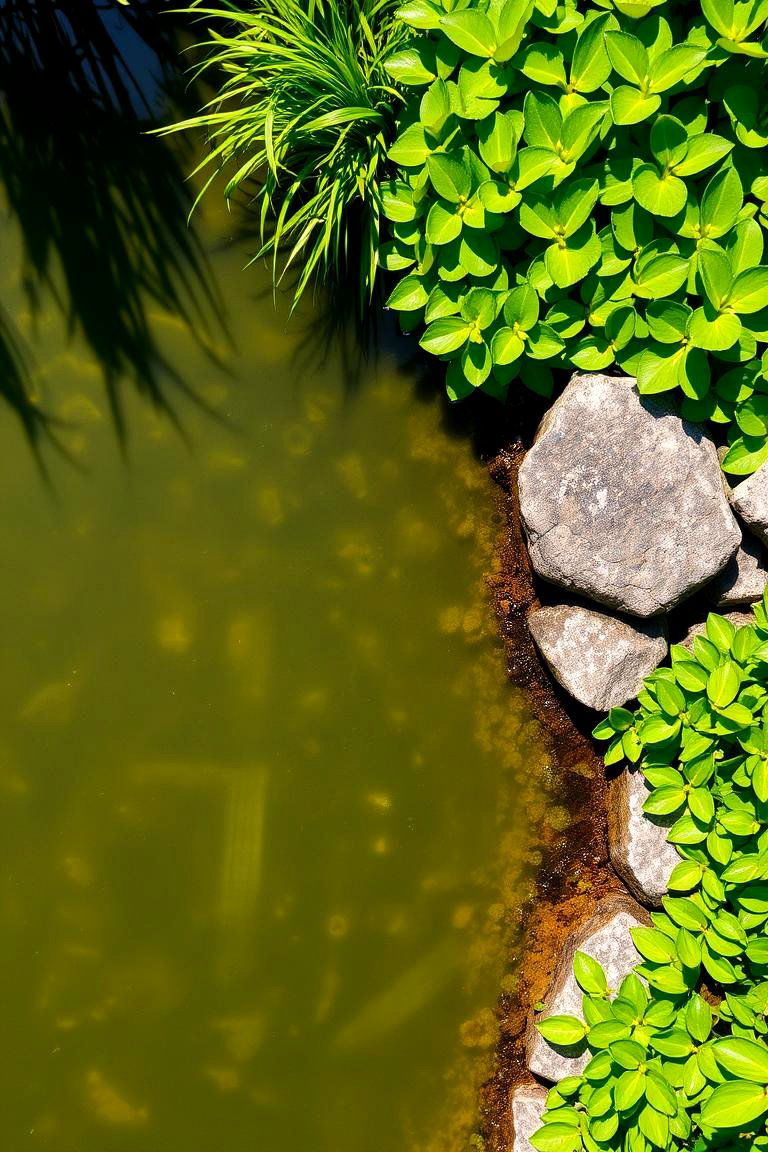
What about integrating a planting bed directly into your pond's edge? This innovative approach not only defines the pond's border but also adds a beautiful display of aquatic or moisture-loving plants. With this method, you can create a seamless transition between the water and the surrounding garden. Bringing a vibrant splash of color and life, these planting beds can house a variety of flora, enhancing the pond's visual appeal and providing habitat for beneficial insects. For practical reasons, ensure the planting bed is constructed with materials that won't leach harmful substances into the water. Moreover, this design helps to filter runoff and maintain water quality, contributing to a healthier pond ecosystem.
7. Metal Edging Sleekness
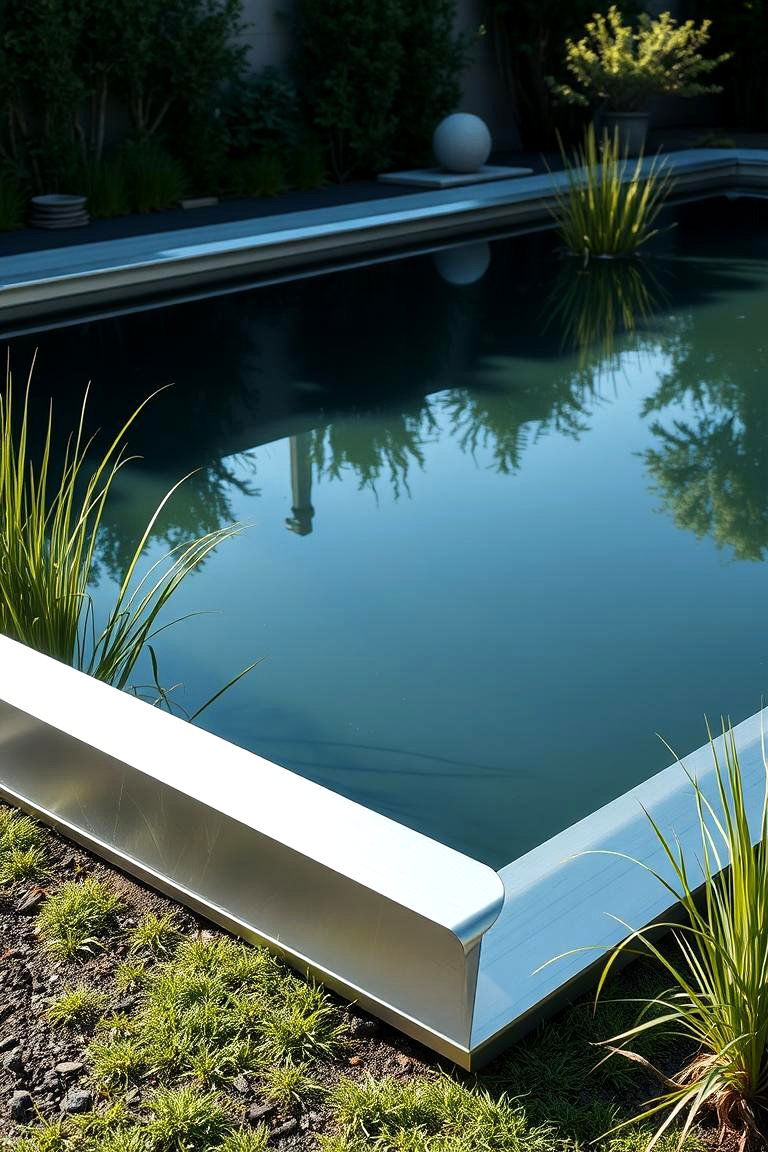
For a contemporary and minimalist look, think about using metal edging for your pond. Materials like aluminum or steel offer a clean and sharp border that can define the pond's shape with precision. With its sleek and modern aesthetic, metal edging provides a subtle yet effective way to contain the water and surrounding landscaping materials. Additionally, it is durable and resistant to corrosion, ensuring longevity. Consider the ease of installation, as metal edging typically comes in flexible strips that can be easily shaped to fit the contours of your pond. Furthermore, its low profile allows for an unobstructed view of the water feature, making it an ideal choice for modern garden designs.
8. Rubber Mulch Softness
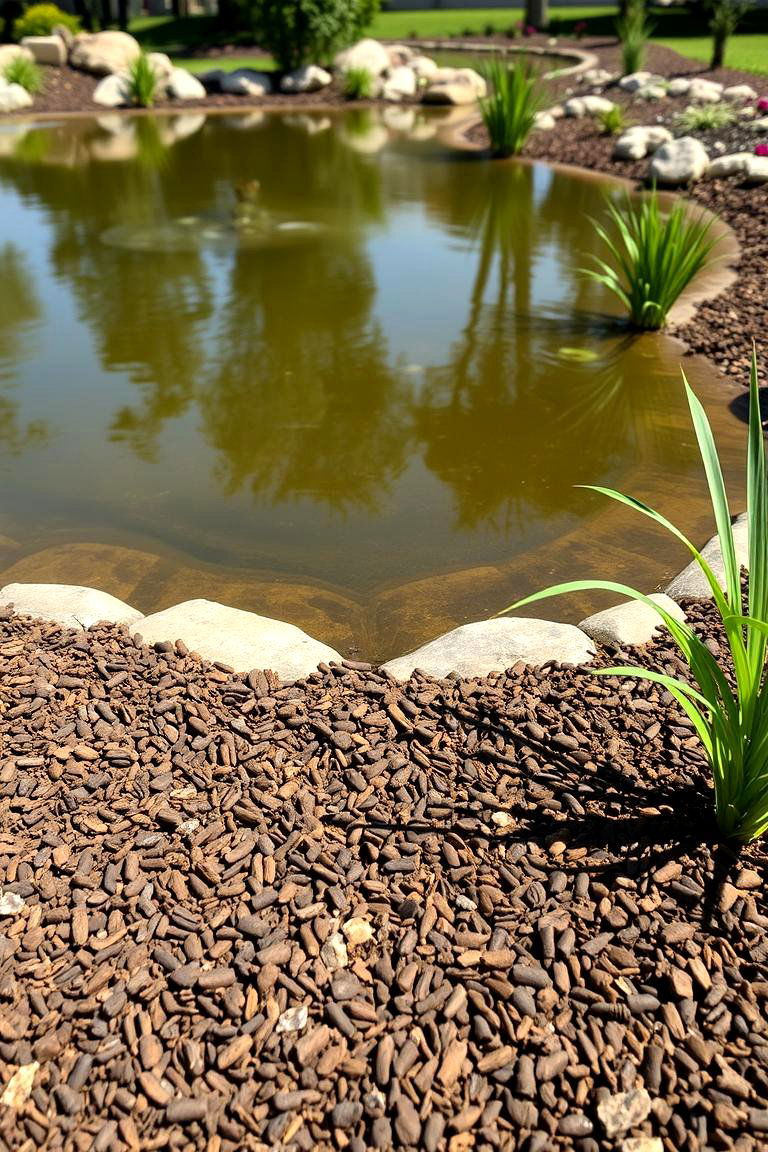
An unconventional yet practical option for pond edging is rubber mulch. Made from recycled tires, this material offers a soft and safe border, especially beneficial for gardens with children or pets. With its shock-absorbing properties, rubber mulch can help prevent accidental slips and falls near the water's edge. Moreover, it's available in various colors, allowing you to choose one that complements your landscape. Consider its excellent drainage properties and resistance to decomposition, making it a low-maintenance and environmentally friendly choice. Additionally, it helps to suppress weed growth around the pond, contributing to a cleaner and more manageable water feature.
9. Gabion Basket Structure
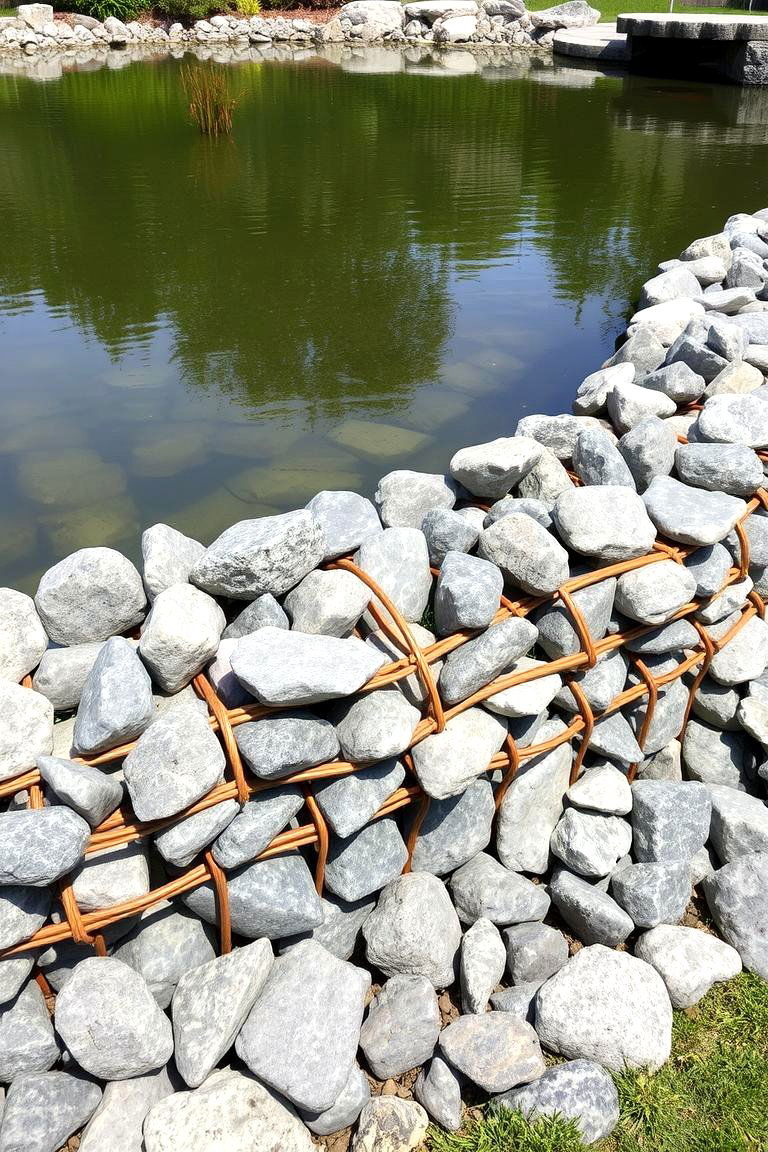
Take a look at the structural and visually interesting option of using gabion baskets for pond edging. These wire cages filled with rocks or other materials create a sturdy and unique border. With their industrial yet natural aesthetic, gabion baskets can add a distinctive architectural element to your garden. Moreover, they are incredibly durable and can withstand significant pressure, making them ideal for larger ponds or those on sloping terrain. Consider the versatility of filling materials, allowing you to customize the look to match your landscape. Furthermore, the gaps between the rocks provide habitat for small creatures, enhancing the biodiversity of your pond area.
10. Flagstone Pathway Grandeur

The grandeur of a flagstone pathway as pond edging adds a touch of natural elegance and sophistication. These large, flat stones create a stable and visually appealing border, perfect for walking around your pond. With their irregular shapes and earthy tones, flagstones offer a timeless and organic look that complements any garden style. Bringing a sense of permanence and beauty, they are also durable and can withstand the elements for many years. For a seamless transition, consider incorporating smaller pebbles or gravel between the flagstones. Additionally, the wide surface provides ample space for placing potted plants or decorative items, further enhancing the pond's aesthetic appeal.
11. Slate Tile Sophistication
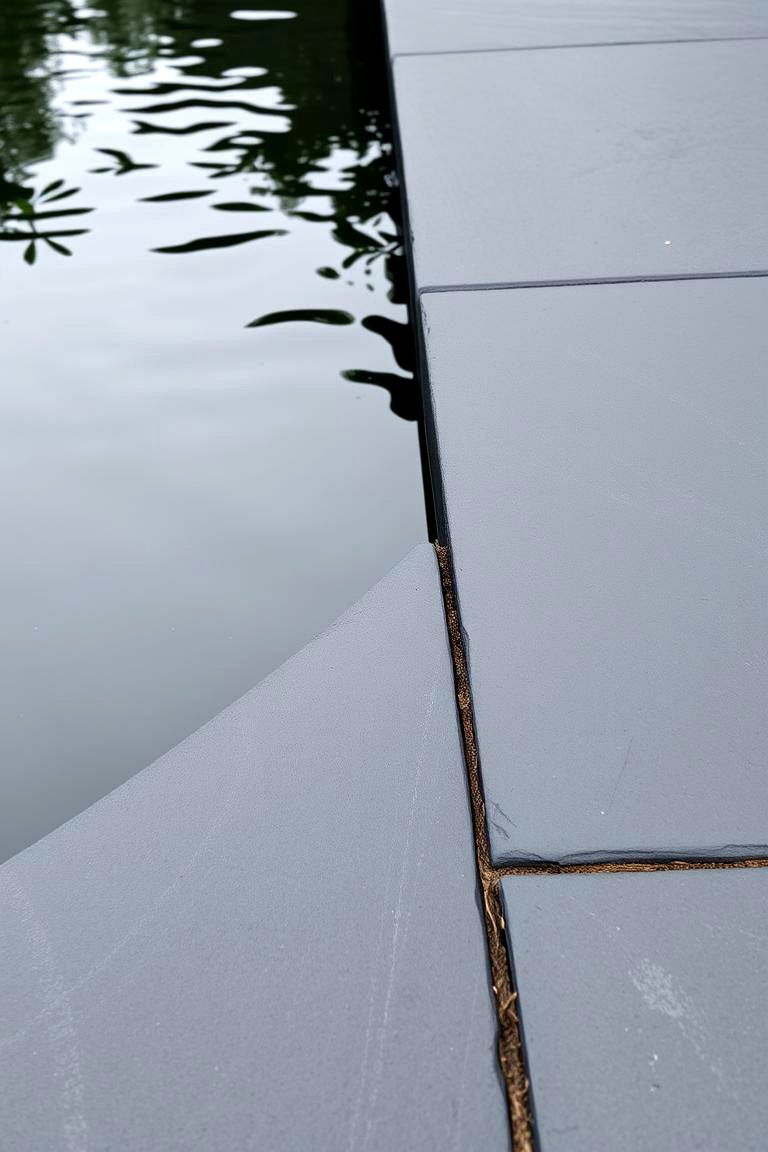
Another sophisticated option for pond edging is the use of slate tiles. Their smooth, flat surfaces and often dark, elegant tones can create a contemporary and refined border for your water feature. With its natural beauty and durability, slate offers a long-lasting and visually appealing solution. Adding a touch of understated elegance, slate tiles are also relatively easy to clean and maintain. For a more natural look, consider using irregularly shaped tiles. Furthermore, the thin profile of slate allows for a clean and unobtrusive edge, highlighting the beauty of the pond itself.
12. Pebble Beach Charm
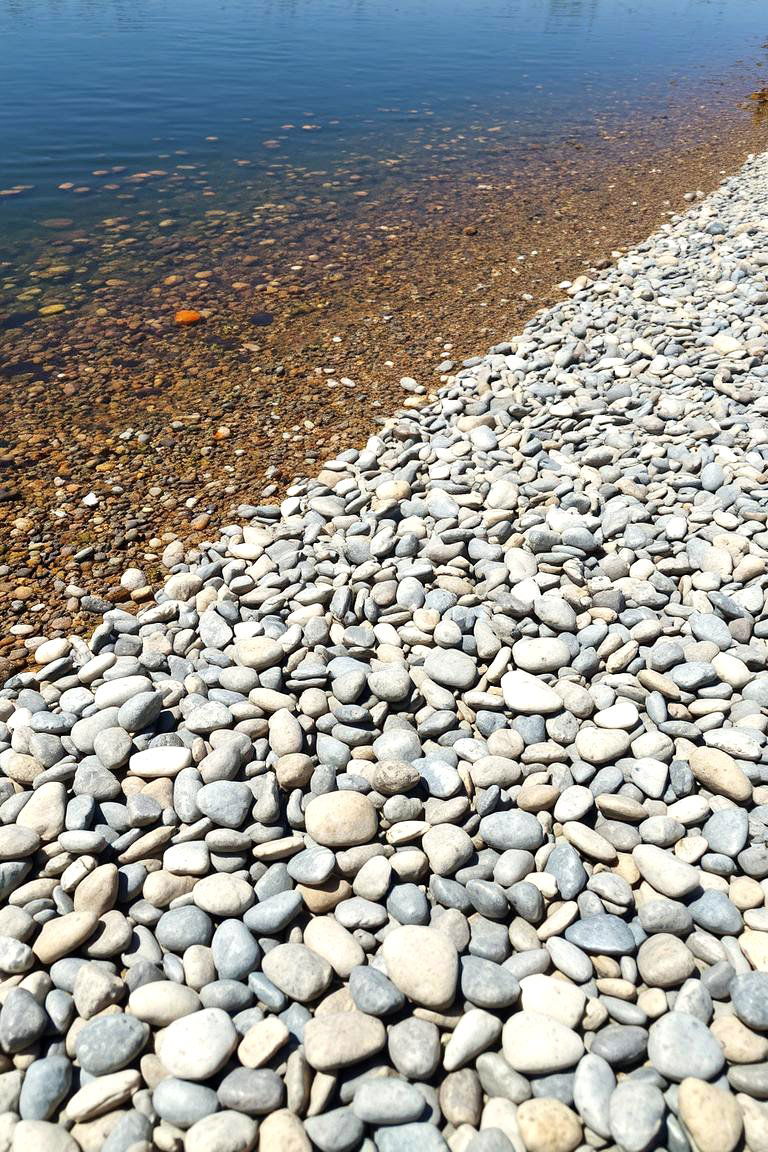
What about creating a charming pebble beach around your pond's edge? This involves using a variety of small, smooth stones to create a natural and textured border. With their soothing aesthetic and the gentle sound they make when disturbed, pebbles can add a sensory element to your pond area. Bringing a relaxed and informal vibe, a pebble beach also provides excellent drainage and helps to prevent soil erosion. Consider using different sizes and colors of pebbles for added visual interest. Additionally, this type of edging is relatively inexpensive and easy to install, making it a popular choice for many pond owners.
13. Bamboo Screen Serenity

For a unique and natural screen effect, consider using bamboo as pond edging. Bamboo stalks can be arranged to create a visually appealing and slightly more private border around your water feature. With its lightweight yet sturdy nature, bamboo offers a sustainable and aesthetically pleasing solution. Adding a touch of Zen-like serenity, it can also help to filter sunlight and provide shade for the pond. Remember to choose treated bamboo to prevent rot and ensure longevity. Furthermore, its vertical lines can create a sense of height and visual interest in your garden design.
14. Recycled Plastic Lumber Durability
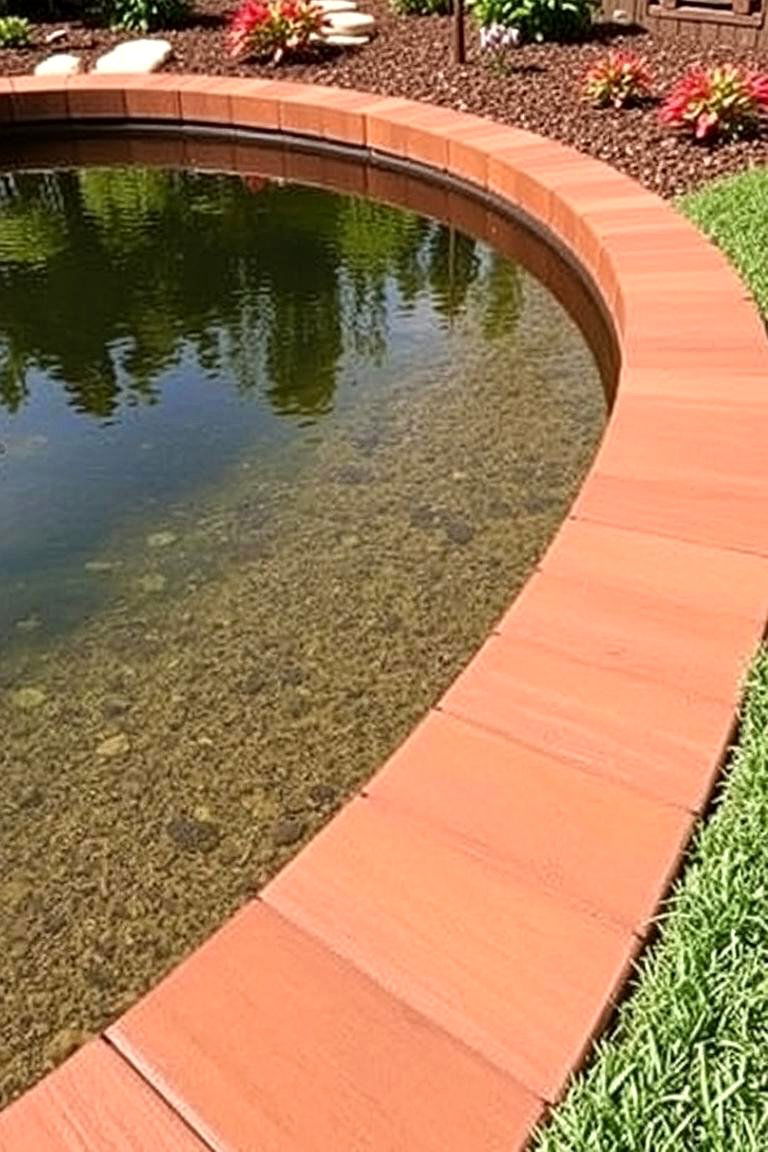
Think about the durability and eco-friendliness of recycled plastic lumber for your pond edging. This material is resistant to rot, insects, and moisture, making it an excellent long-term option. With its low maintenance requirements, recycled plastic lumber can save you time and effort in the long run. Bringing a sustainable approach to your garden, it's available in various colors and finishes to suit your style. Consider its ease of cutting and shaping, allowing for customized designs. Additionally, it provides a clean and uniform look, perfect for both formal and informal garden settings.
15. Terracotta Pot Cascade
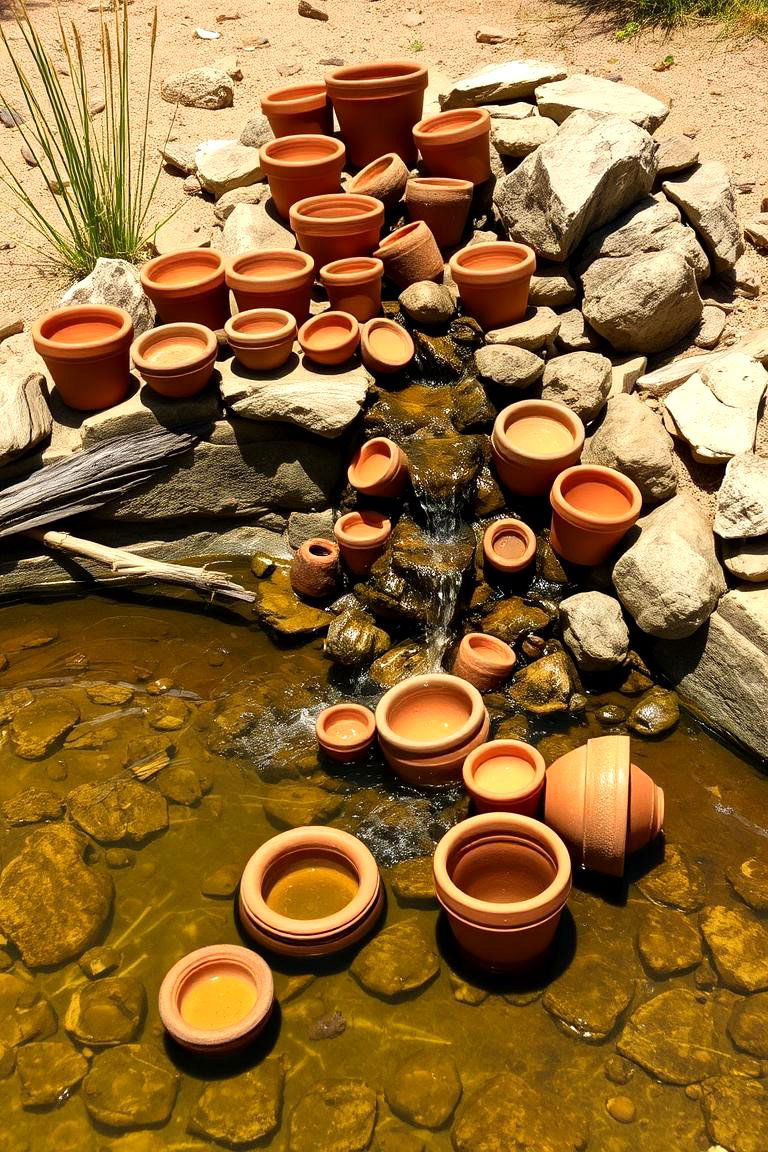
Consider a creative and visually appealing pond edging idea: a cascade of terracotta pots. Arrange various sizes of terracotta pots along the pond's edge, some partially submerged for a unique and charming effect. With their warm, earthy tones, terracotta pots add a touch of Mediterranean charm to your garden. Bringing a sense of rustic elegance, they can also be planted with trailing flowers or greenery to soften the edge further. For a dynamic look, stagger the heights and placements of the pots. Furthermore, this method allows for easy seasonal changes of plants and adds an element of vertical interest to your pond area.
16. Stepping Stone Transition
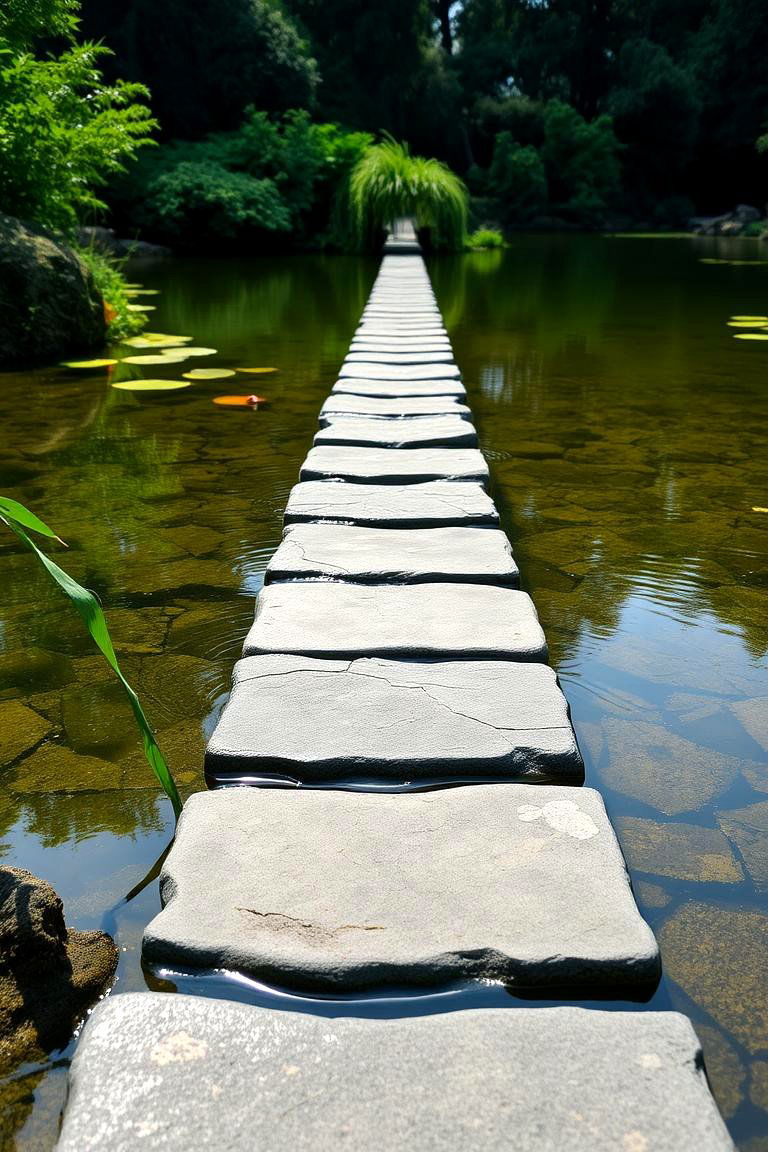
Imagine using stepping stones to create a gradual transition from your lawn or garden into your pond. This functional and aesthetically pleasing approach not only defines the edge but also provides a pathway to interact with your water feature. With various shapes, sizes, and materials available, you can customize the look to match your garden's style. Adding a touch of whimsical charm, stepping stones encourage exploration and provide easy access for maintenance. Consider placing them slightly submerged for a more integrated look. Additionally, planting low-growing ground cover between the stones can further enhance the natural feel and soften the edges.
17. Beach Glass Accent
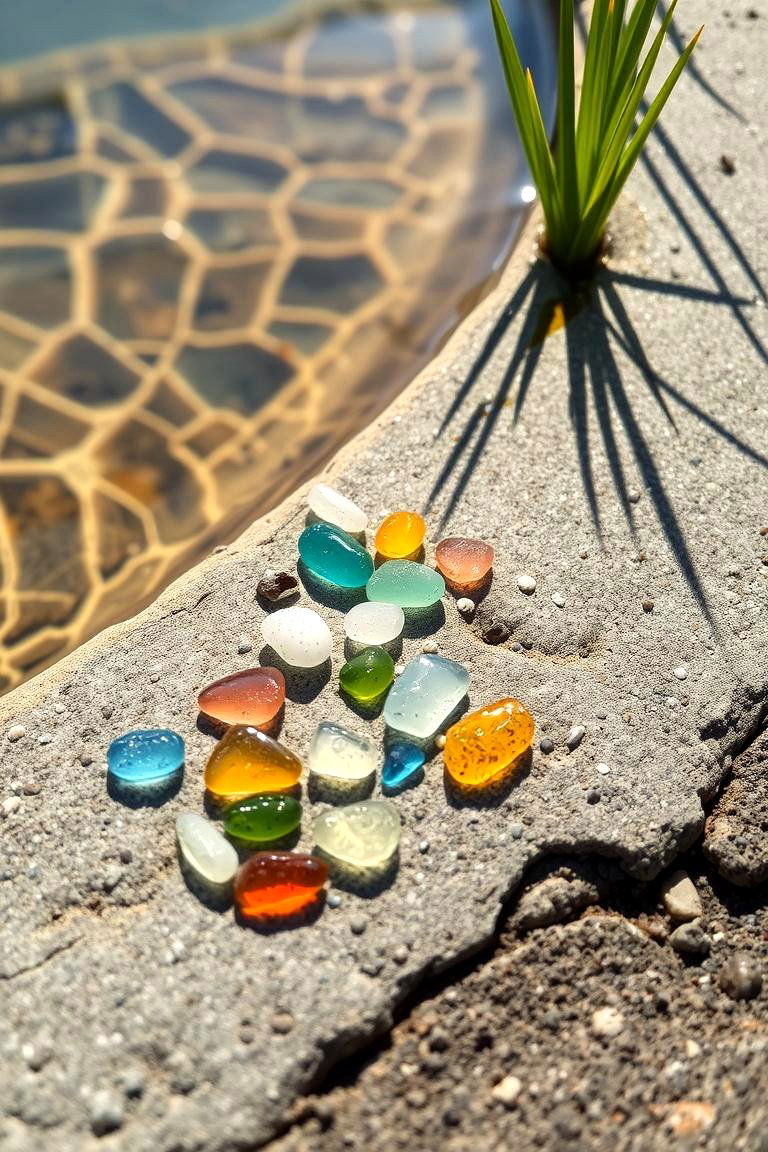
For a unique and eye-catching pond edging detail, consider incorporating beach glass. These smooth, frosted pieces of glass, tumbled by the sea, can be embedded in concrete, mortar, or even arranged in decorative patterns along the pond's border. With their vibrant colors and smooth textures, beach glass adds a touch of coastal charm and artistry to your garden. Bringing a sparkle and shimmer, especially when the sun catches them, they create a truly unique and personalized look. Consider collecting your own beach glass or purchasing it from craft stores. Furthermore, this is a great way to add a recycled element to your pond design.
18. Driftwood Sculpture Edge
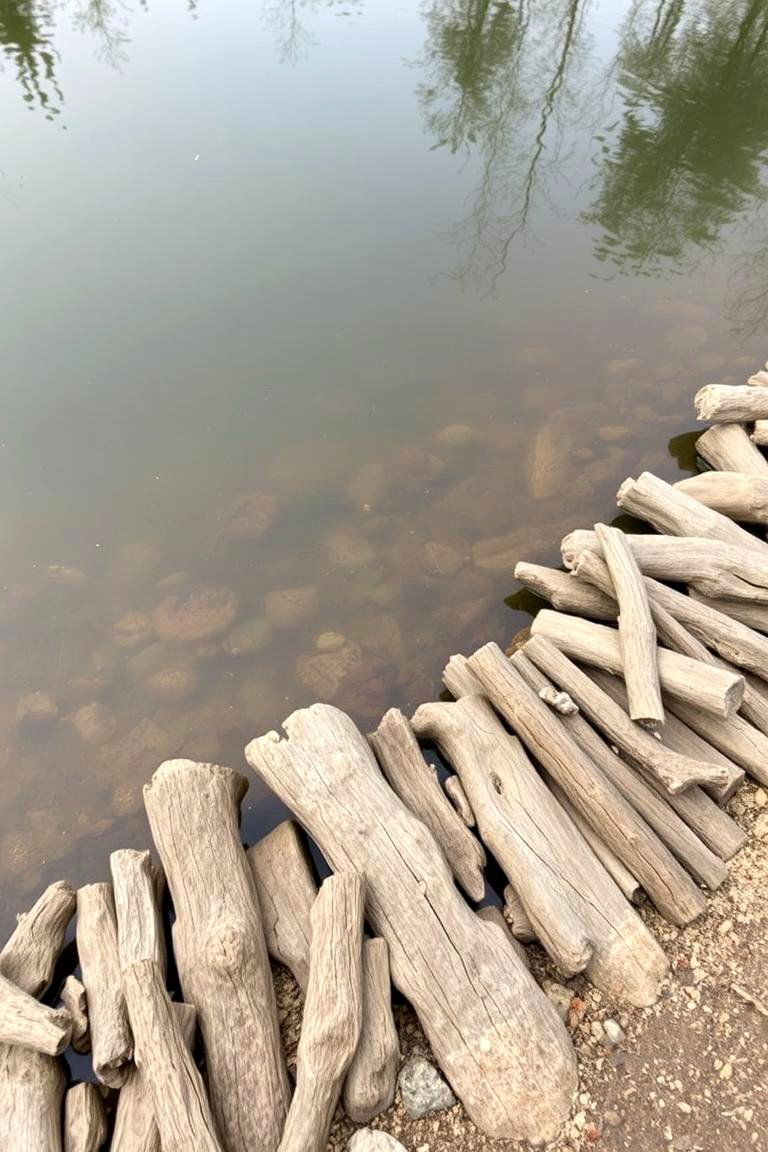
Take inspiration from nature and use driftwood to create a sculptural and organic pond edge. Pieces of weathered wood, with their unique shapes and textures, can be arranged to form a natural and artistic border. With its rustic and beachy vibe, driftwood adds a touch of natural beauty and character to your pond. Bringing a sense of the coast to your backyard, each piece is unique, ensuring a one-of-a-kind edging solution. Consider securing larger pieces to prevent them from floating away. Additionally, driftwood provides habitat for small insects and adds to the natural feel of your pond.
19. Moss Carpet Softness
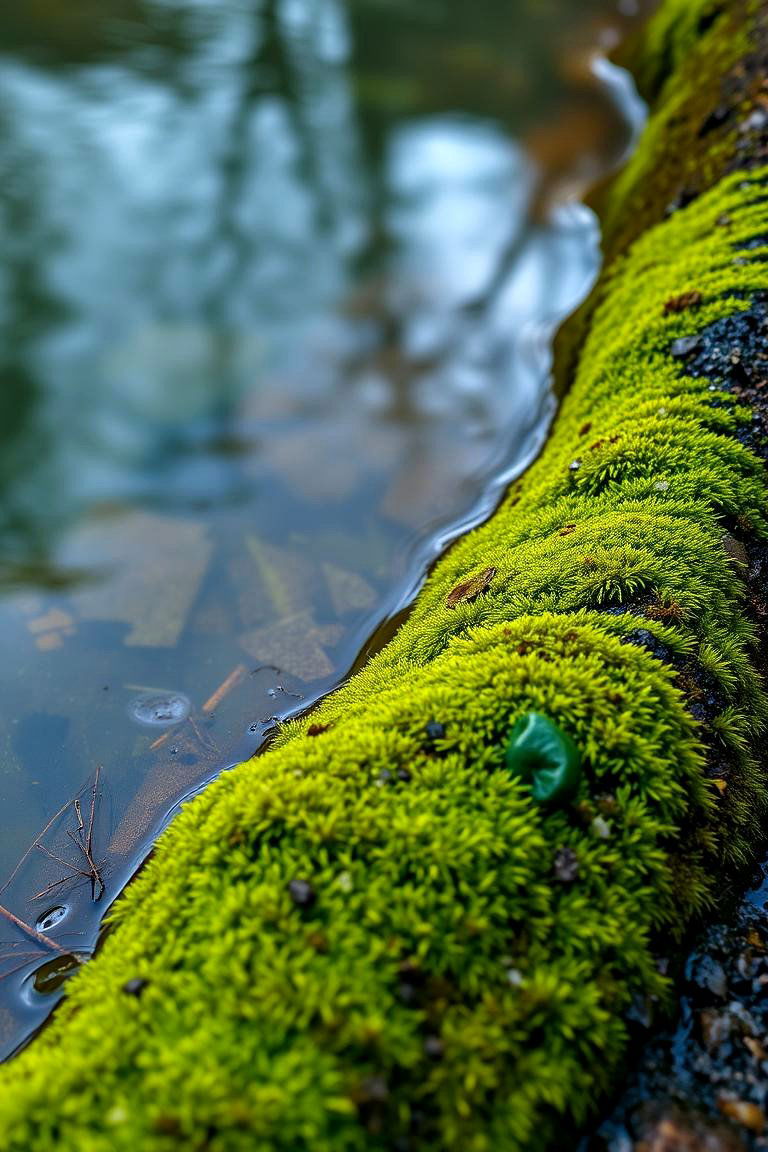
For a truly natural and soft pond edge, consider encouraging the growth of moss. Moss can create a lush, green carpet around the perimeter of your pond, blending seamlessly with the surrounding environment. With its velvety texture and vibrant color, moss adds a touch of tranquility and natural beauty. Bringing a sense of ancient woodland charm, it thrives in moist and shaded conditions, making it ideal for certain pond locations. Consider introducing different types of moss for varied textures and colors. Furthermore, moss helps to retain moisture and can even act as a natural filter for runoff.
20. Wildflower Meadow Border
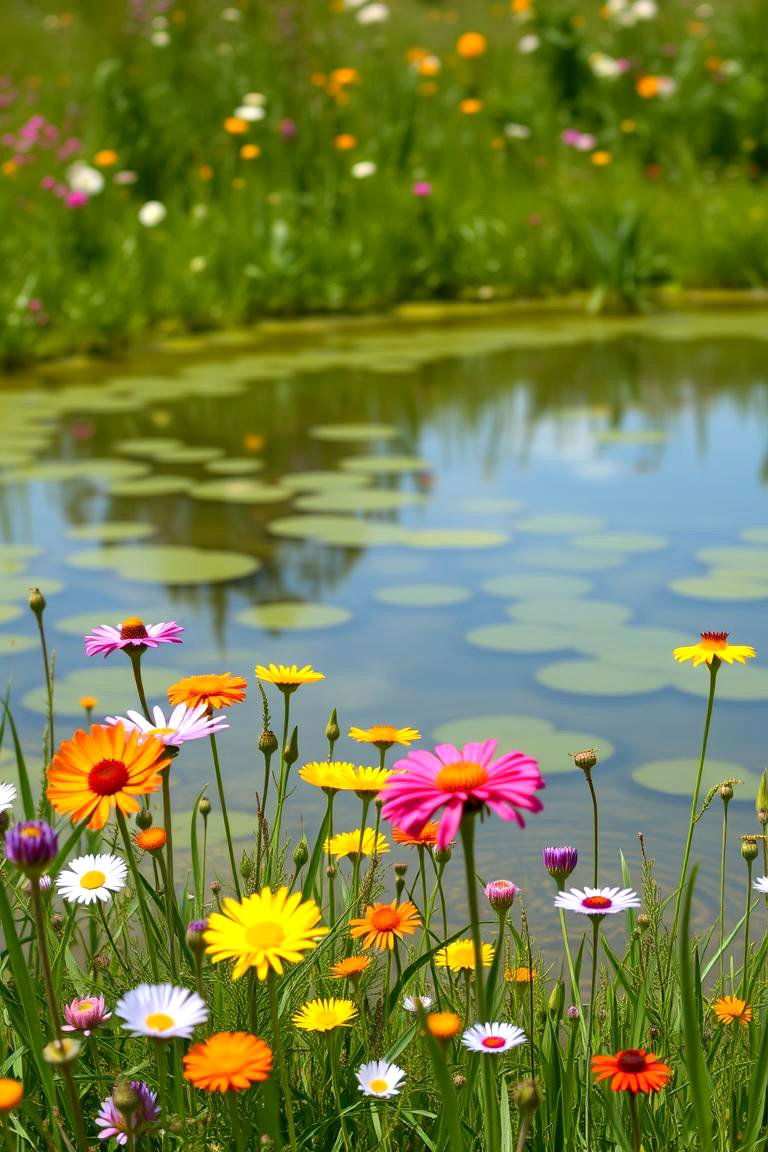
What about allowing a wildflower meadow to naturally border your pond? This approach creates a soft and informal edge, attracting pollinators and adding a vibrant display of color throughout the seasons. With their diverse shapes and hues, wildflowers bring a natural and ever-changing beauty to your pond area. Adding a touch of wild charm, this option requires minimal maintenance once established. Consider choosing native wildflower species that are well-suited to your local climate and soil conditions. Furthermore, this type of border supports biodiversity and creates a haven for bees and butterflies.
21. Underwater Lighting Accent
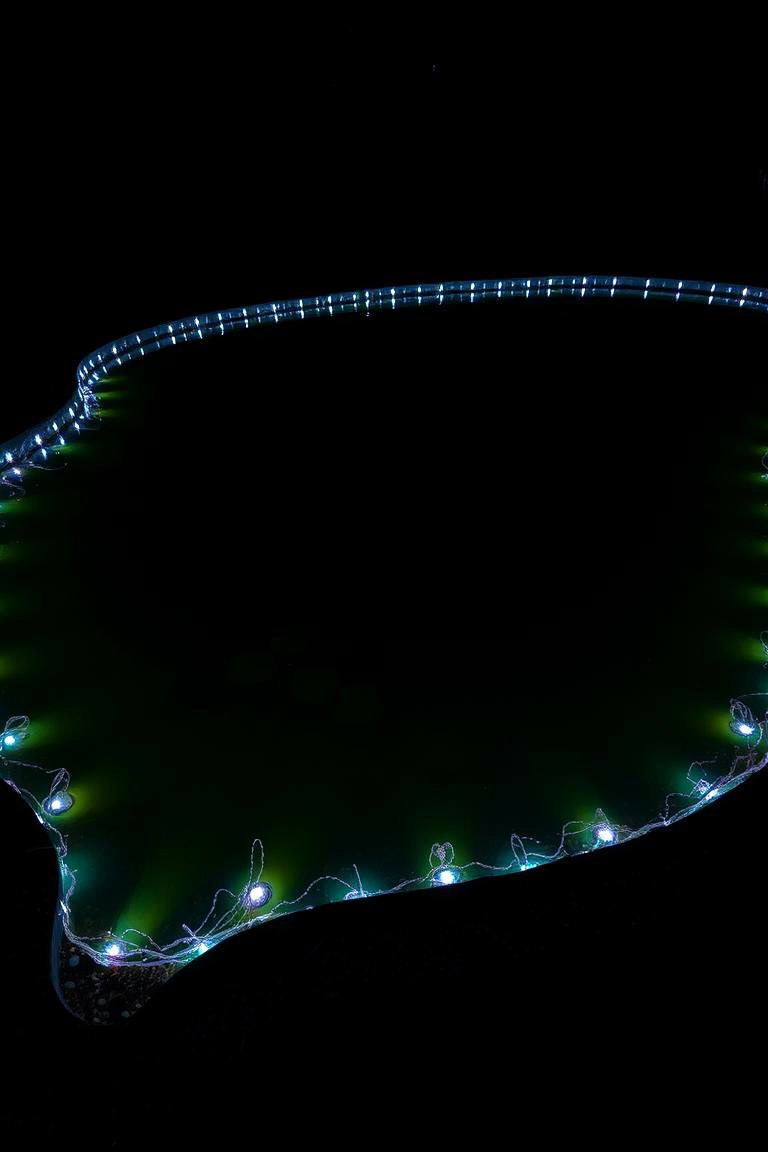
Think beyond traditional edging materials and consider the impact of underwater lighting to define your pond's edge at night. Submersible lights placed along the perimeter can create a stunning visual effect, highlighting the shape and features of your pond. With various colors and intensities available, you can customize the ambiance to suit your mood. Bringing a magical and enchanting feel to your garden after dark, underwater lighting can transform your pond into a captivating focal point. Consider solar-powered options for energy efficiency. Furthermore, this subtle yet effective method adds a layer of sophistication and extends the enjoyment of your pond into the evening hours.
22. Cobblestone Path Charm
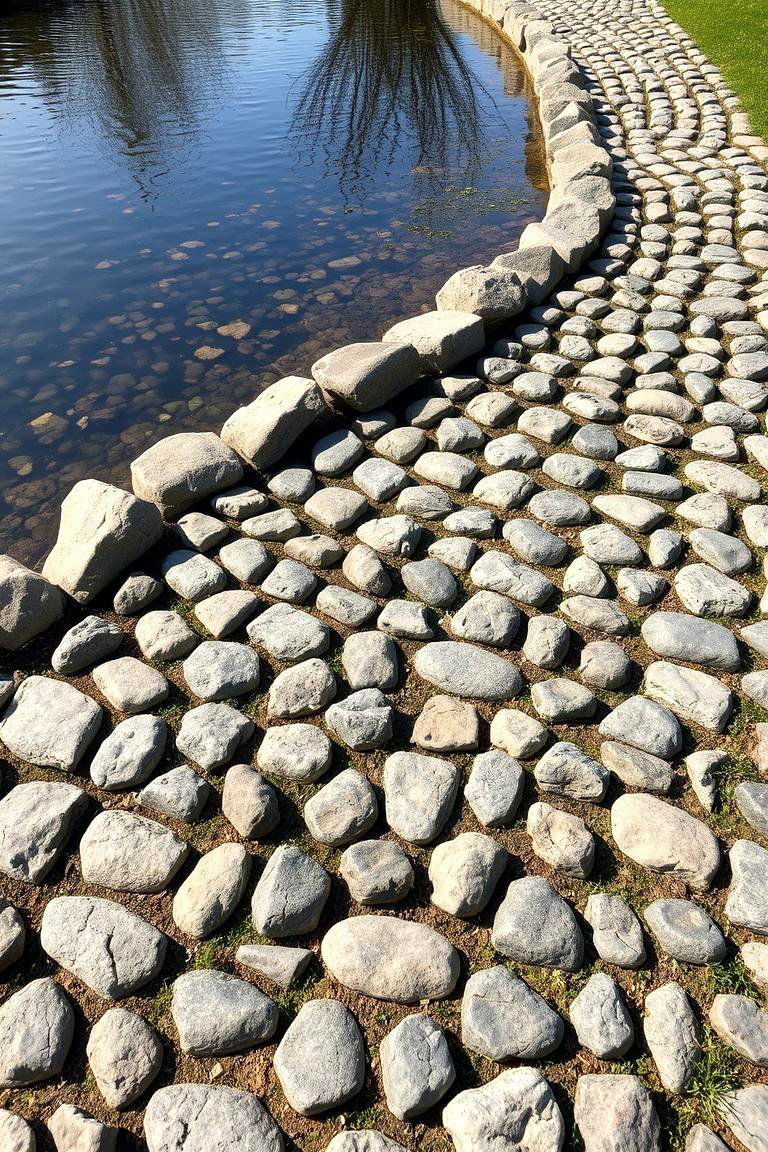
The timeless charm of a cobblestone path can create a beautiful and durable edge for your pond. These rounded stones, with their varied colors and textures, offer a classic and rustic aesthetic. With their inherent durability, cobblestones provide a long-lasting and stable border for your water feature. Adding a touch of old-world charm, they can be arranged in various patterns to create a unique and visually appealing look. Consider the slightly uneven surface, which adds to their character. Furthermore, cobblestones are relatively low maintenance and can withstand the elements for many years, making them a worthwhile investment for your pond.
23. Vertical Wood Slat Wall

For a more contemporary and defined edge, consider building a low vertical wall using wooden slats. This creates a clean and modern border, particularly suitable for more formal garden designs. With its clean lines and natural material, a wood slat wall offers a stylish way to define your pond's perimeter. Adding a touch of modern elegance, it can also provide a slight barrier and help to contain splashing. Remember to use weather-resistant wood and consider staining or sealing it for longevity. Furthermore, the height of the wall can be adjusted to suit your specific needs and aesthetic preferences.
24. Layered Rock Garden Edge
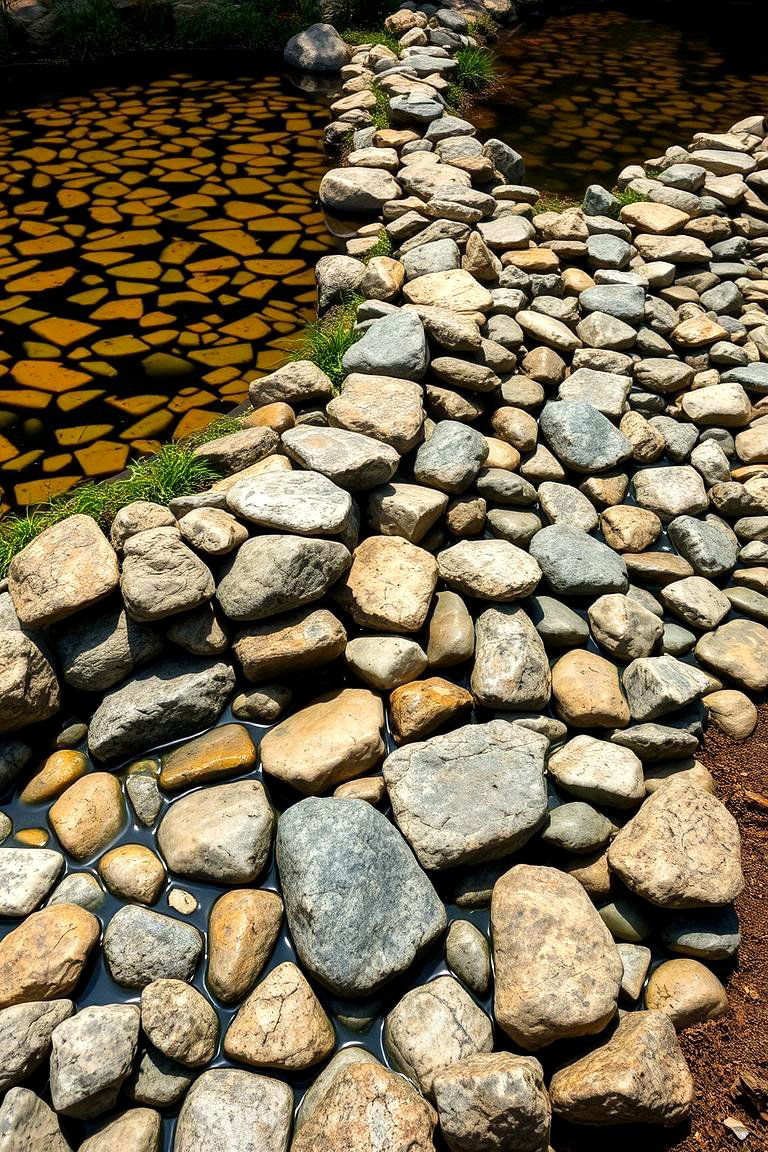
Finally, consider creating a layered rock garden as a unique and visually dynamic pond edge. Arrange rocks of various sizes and types in layers along the pond's border, creating a textured and naturalistic look. With its multi-dimensional appeal, a layered rock garden adds depth and visual interest to your pond area. Bringing a sense of mountain tranquility, it also provides excellent drainage and habitat for small alpine plants. Consider incorporating drought-tolerant plants that thrive in rocky conditions. Furthermore, this type of edging can help to prevent soil erosion and create a stunning transition between the pond and the surrounding landscape.
Conclusion:
From the rustic charm of natural stone and wooden logs to the sleek sophistication of metal and slate, the possibilities for enhancing your pond with creative edging are truly vast. Exploring these 24 pond edging ideas reveals that the perfect border is not just about functionality but also about reflecting your personal style and the overall aesthetic of your garden. Whether you prioritize a natural, low-maintenance approach or a more structured and contemporary design, the right edging can elevate your pond from a simple water feature to a stunning focal point in your outdoor oasis. We encourage you to consider these diverse options and discover the ideal way to frame your aquatic haven, ensuring its beauty and longevity for years to come.


